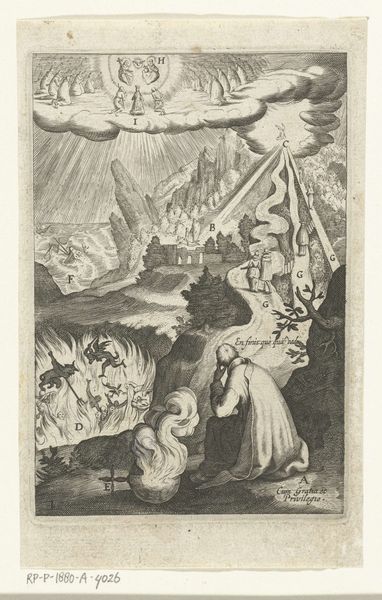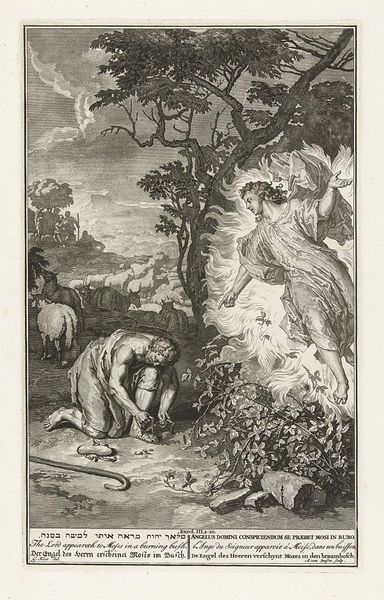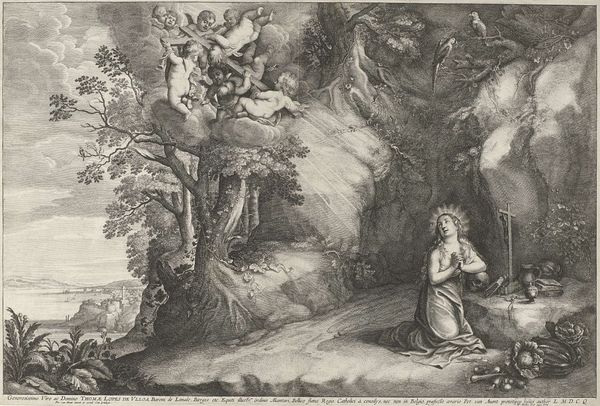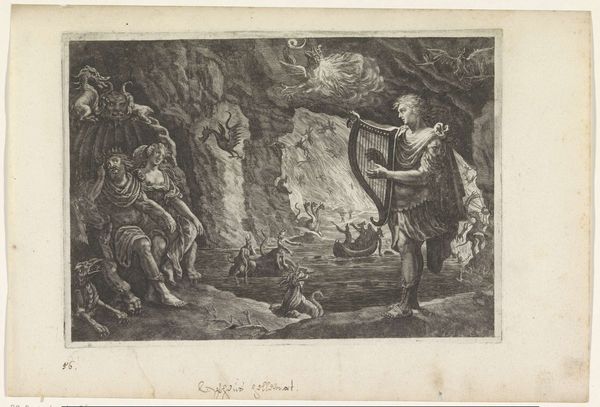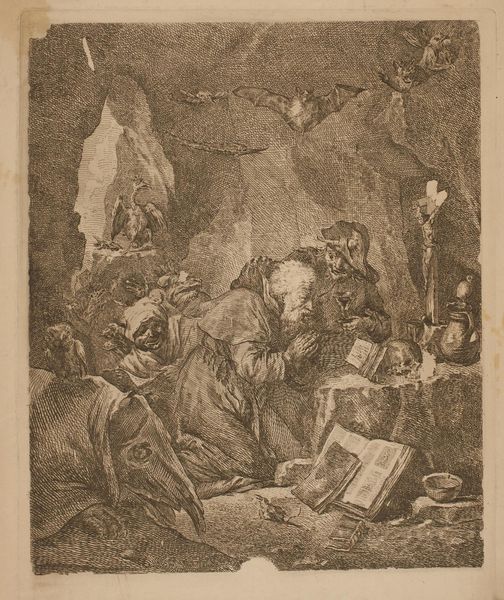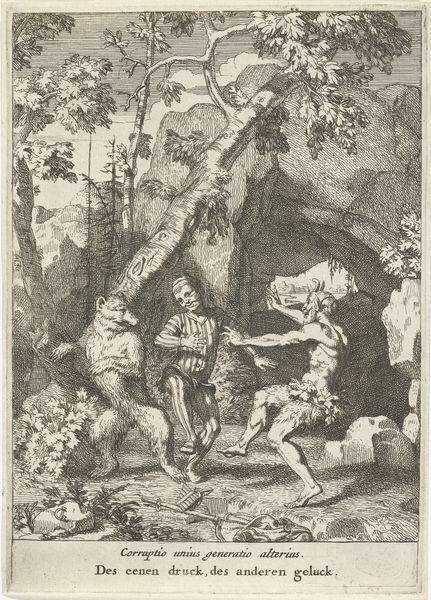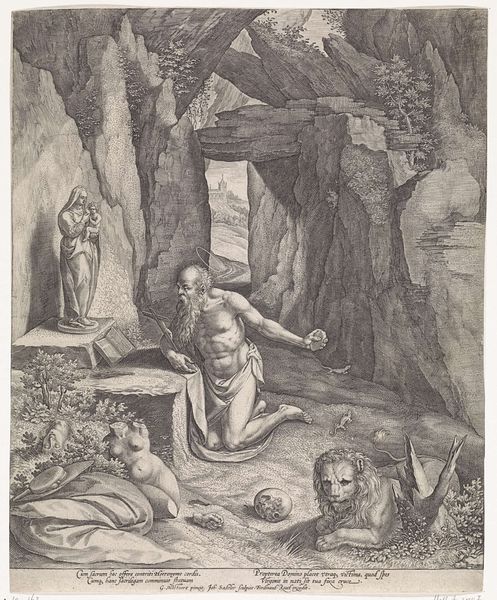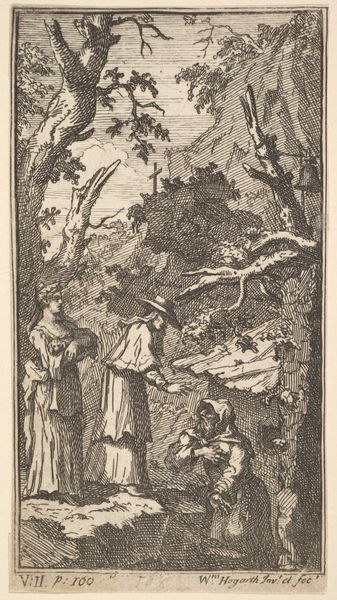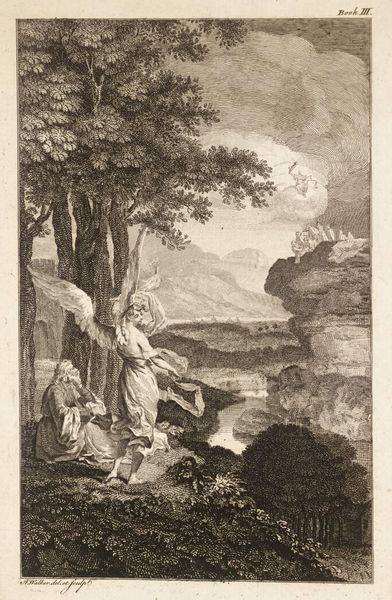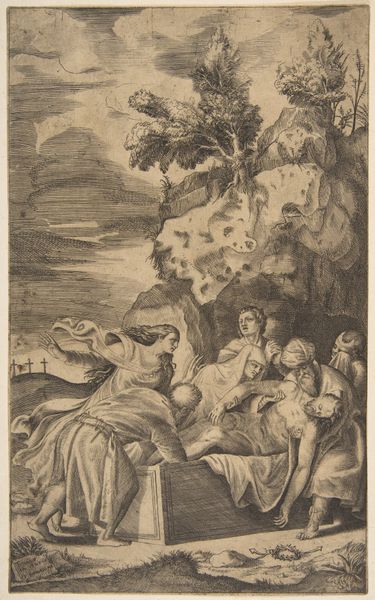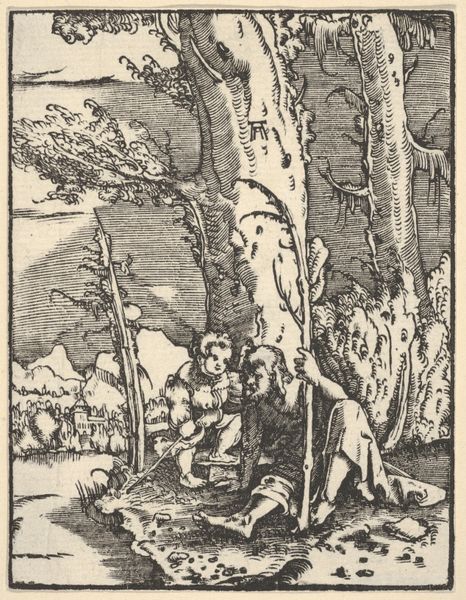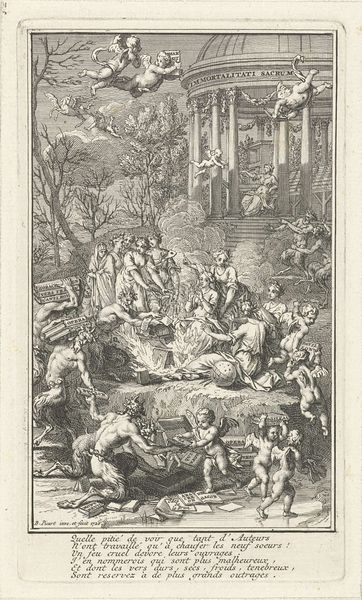
print, etching
#
ink drawing
#
allegory
#
narrative-art
#
baroque
# print
#
pen sketch
#
etching
#
genre-painting
Dimensions: height 166 mm, width 128 mm
Copyright: Rijks Museum: Open Domain
Editor: Here we have Johannes Vorsterman's etching, "Allegory of the Path of True Love," created in 1661. The detail is amazing, but it also feels… ominous. There are figures lurking in a dark forest. What can you tell me about it? Curator: This etching speaks volumes about the 17th-century Dutch perspective on love and relationships. The “path of true love” wasn’t necessarily straightforward; it was often fraught with societal expectations, moral choices and the ever-present gaze of the community. Editor: So, the forest represents challenges? Curator: Precisely! And note how the artist contrasts the darkness below with the idyllic scene in the upper right corner, seemingly depicting the ultimate goal of marriage and family. This contrast forces us to ask: What obstacles did one face in 17th century Netherlands? Marriage was heavily influenced by social status, wealth and family connections. Love was only part of the equation. Editor: I see. What about the older man with the lantern at the bottom? He seems important. Curator: The old man likely represents wisdom or perhaps societal guidance, but consider that he also carries a lantern. He sheds light, but only illuminates so much. Who controls that narrative? Vorsterman invites the viewer to consider the limitations of societal norms and institutions. It asks us if societal guidance helps navigate this journey, or rather restricts true feelings in relationships? Editor: So, is Vorsterman being critical? Curator: Perhaps not explicitly critical, but he's definitely prompting us to question the established norms. How love was constructed, perceived and regulated at the time. That’s the role of art in the public sphere, after all. Editor: I never thought about approaching it that way. Thank you for pointing out those subtle yet powerful ways Vorsterman communicates the nuances of "true love." Curator: My pleasure. Considering the artwork's place in a network of socio-cultural meanings always enhances one’s viewing experience.
Comments
No comments
Be the first to comment and join the conversation on the ultimate creative platform.
